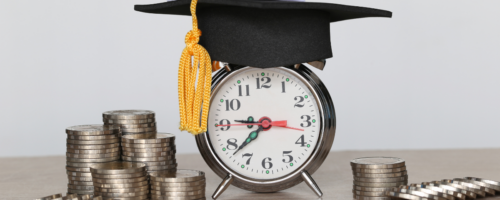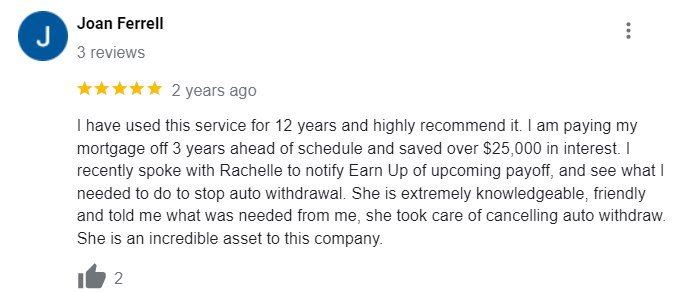Credit card debt can feel overwhelming, especially when facing a balance of $6,000. This guide covers practical strategies on how to pay off $6,000 in credit card debt. You’ll discover different approaches, along with helpful tips and examples to navigate this financial challenge.
Credit card debt in the U.S. has reached record highs, so you are not alone in facing this challenge. But don’t let the numbers discourage you. Instead, view this as a starting point for taking control of your finances and learning how to pay off $6,000 in credit card debt.
Understanding Your Credit Card Debt
Before we explore repayment strategies, let’s look closely at your current debt situation. A good starting point is understanding the terms and conditions of your credit cards. This includes the interest rates (APR), minimum payments, and any associated fees.
To effectively manage your debt, create a clear picture of your financial situation. Calculate the total amount you owe and assess your budget. Identify unnecessary expenses to free up money you can allocate towards debt repayment. Also consider what kind of budget or savings strategy you can put into place, like the 50/30/20 budget, that will benefit you long term.
Credit Card Terms and Conditions
Here’s a simple table illustrating some common credit card terms to help you better understand yours:
| Term | Description |
|---|---|
| Annual Percentage Rate (APR) | The annual cost of borrowing money on your credit card, expressed as a percentage. It’s crucial for understanding how much interest you accrue on unpaid balances. |
| Minimum Payment | The smallest amount you’re required to pay each month to keep your account in good standing. It’s typically a percentage of your balance or a fixed minimum amount. While paying only the minimum is tempting, be mindful that this route can take years to pay off the balance and can result in much higher overall interest paid. |
| Balance Transfer Fee | A fee often charged when you move debt from one credit card to another, often expressed as a percentage of the amount being transferred. |
| Grace Period | The time you have after your billing cycle ends to make a payment before interest charges kick in. |
Strategies for Paying Off $6,000
With a good grasp of your debt and financial situation, you’re ready to explore strategies for how to pay off $6,000 in credit card debt. Remember, the key to any successful strategy is commitment and consistency.
1. The Debt Snowball Method
This popular strategy focuses on the psychological momentum of small victories. With this method, you prioritize paying down the smallest debt first, regardless of the interest rate.
This allows you to get quick wins, boosting your motivation to continue. Let’s say you have three credit cards with balances of $1,500, $2,000, and $2,500. Allocate any extra funds you have towards the $1,500 credit card while making minimum payments on the others.
Once the smallest balance is paid, roll the money you were paying on it to the next smallest debt ($2,000), while still maintaining minimum payments on the $2,500 card. Continue this pattern until you’ve eliminated all debt on your credit cards.
2. The Debt Avalanche Method
The Avalanche Method emphasizes minimizing interest payments. This approach targets your debt with the highest APR first, which in the long run saves you the most money.
To illustrate, consider the same example with three cards but assume different interest rates:
- Card 1: $1,500 balance at 15% APR
- Card 2: $2,000 balance at 20% APR
- Card 3: $2,500 balance at 18% APR
In this case, focus extra payments on Card 2 with the 20% APR while paying the minimums on the other two cards. As with the Snowball Method, once Card 2 is paid off, roll those payments into Card 3 with the next highest interest rate.
Deciding between the Avalanche and Snowball methods depends on your personality and priorities. Do you prefer quick wins and building motivation through small victories, or saving the most on interest costs? Choose the strategy that feels most aligned with your financial mindset and helps you figure out how to pay $6,000 in debt off.
3. Balance Transfer Credit Cards
Balance transfer credit cards offer a chance to move high-interest debt to a card with a lower rate, potentially saving you money on interest.
There are a few things to watch out for. Watch out for balance transfer fees, these are commonly around 3 to 5 percent. This type of offer is most beneficial if the savings from the lower rate outweigh any associated transfer fee. Before applying, thoroughly evaluate the terms of each offer.
Additional Tips and Strategies
In addition to the core repayment strategies above, consider these techniques to boost your debt-busting journey. Sometimes figuring out how to pay off $6,000 in credit card debt requires adjusting some spending habits and finding creative ways to generate additional income.
4. Consolidate Your Debt
If you have multiple credit card debts, you might simplify your payments with a debt consolidation loan. This involves taking out a single loan to pay off your credit cards. A debt consolidation loan can reduce your interest rates and lower your monthly payment amounts.
Be aware though, you will need good credit for this strategy. Here are some more options if consolidation does not work for you.
Personal Loan vs. Debt Consolidation Loan: What’s the Difference?
Are debt consolidation loans and personal loans really different? They might sound similar, but there are some key differences.
A personal loan is like a catch-all solution. You can use it for almost anything – paying off credit card debt, home improvements, even that dream vacation you’ve been saving for. Personal loans usually come with fixed interest rates, meaning your monthly payment stays the same, which makes budgeting a breeze.
Now, a debt consolidation loan? This one’s laser-focused on – you guessed it – consolidating debt. This means you take out one loan to pay off several other debts, like those pesky credit cards with high interest rates. This can simplify your finances because you’ll only have one payment to worry about. Plus, you might even snag a lower interest rate, which can save you money on interest charges.
5. Negotiate with Your Creditors
Reach out to your credit card company. This might involve lowering your APR or negotiating a temporary forbearance period. If you’re experiencing hardship, don’t hesitate to contact your creditor and explore possible debt relief options.
Deciding When Debt Negotiation is Right for You
Debt negotiation can hurt your credit score. It shows lenders you didn’t fully repay your debt. This makes it harder to get loans in the future. Plus, the IRS might see that forgiven debt as income and you’ll have to pay taxes on it.
So, when does debt negotiation make sense? Think about it if you’re in a tough spot. Maybe you lost your job or have huge medical bills. If you’re behind on payments and can’t see a way out, it might be an option.
6. Make Extra Payments
Even small extra payments toward your principal balance accelerate debt repayment and lessen overall interest costs. Try bi-weekly payments or any extra money you can round up. Consider putting unexpected income – bonuses, tax refunds, or monetary gifts towards paying down your debt faster.
How Bi-Weekly Payments Reduce Interest
Think about this: you make more payments when you pay bi-weekly, right? That means you chip away at your principal faster. But how does this save you money on those pesky interest charges? Well, every time you make a payment, it’s like you’re hitting the reset button on the amount of interest that gets tacked on. So, instead of interest being calculated on your total balance for a whole month, it’s calculated on a smaller amount more frequently.
Let’s say you owe $6,000 in credit card debt with a 20% interest rate. With a typical monthly payment, you’re looking at a longer road to freedom from debt. But switch to bi-weekly payments, and you’re essentially making one extra payment each year. That extra payment goes straight toward your principal, which, over time, can save you a bunch of money in interest.
7. Cut Back on Expenses
Take a close look at your spending habits. Identifying and reducing unnecessary expenses frees up more funds. Small changes to daily routines can add up significantly over time, letting you contribute more towards eliminating your debt.
Easy Ways to Reduce Expenses
Do you buy coffee every day? Do you spend a lot of money eating out? Small changes can make a big difference. Pack your lunch a few days a week. Make coffee at home.
Think about your “wants” versus “needs.” You need to pay your rent or mortgage. But, do you need that streaming service? Maybe not. Cut back on non-essential subscriptions. You can always sign up for them again later. This frees up cash to put towards your debt.
Additionally, take advantage of coupons and sales to cut your spending. Shop weekly deals and promotions at the grocery store. Need new clothing or shoes? Check out what’s on sale or go thrifting. Something at home in need of repairs? Shop around and get quotes from multiple companies to make sure you’re getting the best deal.
8. Increase Your Income
Take on a side gig or monetize a hobby. The extra income you earn can be a game-changer, especially if you channel it towards accelerating debt repayment. By using a multi-faceted approach combining various methods you increase the odds of success in getting debt free.
Popular Side Gigs for Extra Income
With so many options, which side gig is right for you? Well, here are a few ideas to get those wheels turning:
- Delivery Driver: Becoming a delivery driver is super flexible. You can set your own hours and work around your schedule. Plus, it’s a great way to make some extra cash, especially if you’re comfortable navigating your city.
- Freelancer: Are you a wordsmith or a tech whiz? Freelancing lets you use your skills to help people or small businesses with different projects. You could be writing website content one day and designing logos the next! It’s all about finding what you’re good at and finding clients who need your help.
- Online Tutor: If you love sharing your knowledge, online tutoring could be perfect. You can help students with their homework or even teach them new skills. It’s rewarding and you can often set your own rates.
FAQs about How to Pay Off $6,000 in Credit Card Debt
How long does it take to pay off $6,000 in credit card debt?
This depends entirely on your approach and financial situation. A 2024 report found that if you’re just making minimum payments it will take around 25 years. However, you can speed this process up with dedicated repayment strategies.
How to pay off $6k in debt fast?
Focus on higher payments by using either the debt snowball or avalanche method. This includes cutting back on expenses or adding income sources. Taking advantage of low intro APR balance transfer offers may also provide a faster track.
How to get out of $6,000 credit card debt?
You can do this by establishing a strict budget, and consistently paying more than your minimum amount.
Is $6,000 a lot of credit card debt?
Credit reporting agency Experian notes that the average credit card balance is now exceeding $6,300, showing $6,000 is unfortunately a common amount to be in. That does not make it less burdensome, so act decisively now. Your actions determine how quickly you regain control.
Conclusion
Taking steps on how to pay off $6,000 in credit card debt is a journey. But by implementing a plan, and with some dedication and consistent action, you can achieve your goal of becoming debt-free. The tips provided give a comprehensive strategy to becoming financially independent.










